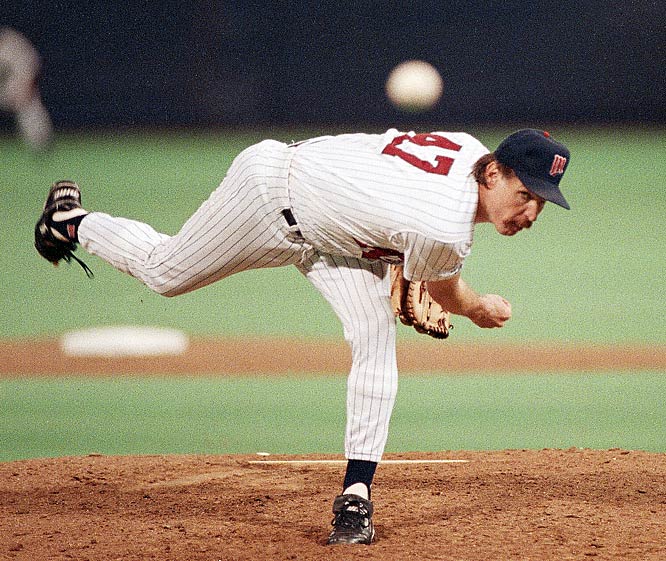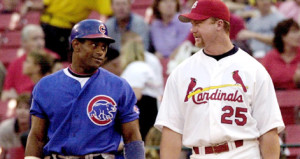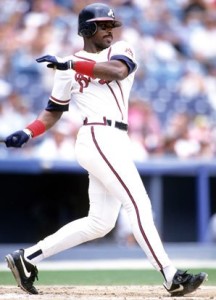The Worst Class In Baseball Hall of Fame History?

In his 14th year on the ballot, Jack Morris will try to finally earn a spot in the Baseball Hall of Fame.
When the Baseball Hall of Fame announces its 2013 Induction Class on January 9th it is legitimately possible that not a single player will receive the 75% of the votes needed to gain entry. That would seemingly make the class of 2013 arguably the worst in the history of the Hall of Fame.
Funny thing is, if it were not for the steroid controversy that surrounds many of the eligible players, the class of 2013 would likely go down as the greatest since the initial Hall of Fame Class in 1936.
The baseball record books are littered with the names of players eligible for the Hall of Fame in 2013.
From first time candidates Roger Clemens, Barry Bonds, Mike Piazza, Craig Biggio, Sammy Sosa and Curt Schilling to holdovers Mark McGwire, Rafael Palmeiro and Jeff Bagwell, the list of players with seemingly Hall of Fame worthy statistics on the ballot is amazing. And that list doesn’t even include long-time candidates Jack Morris, Fred McGriff, Tim Raines and Lee Smith, who all posted careers that are at-least close to being considered Hall of Fame worthy.
Unfortunately, because many of the players listed above have been tainted by steroids and those that haven’t been actually implemented have suffered from guilt by era, which players will actually receive enough votes to get into the Hall of Fame is anyone’s guess.
Among the first-time eligible candidates, it seems likely that Bonds and Clemens will both have some voters who support them primarily because they were seen as likely Hall of Famers for their play in the years before their suspected steroid use occurred. However, based on early polling, that isn’t expected to be enough to get them into the Hall of Fame the first time around.

Even though Mark McGwire and Sammy Sosa captured the immagination of the baseball world in 1998, neither player will likely ever earn a spot in the Hall of Fame.
Even though Sammy Sosa hit 609 career home runs and had a record three seasons with more than 60 home runs, he had only a couple good seasons before suddenly erupting for his elite seasons and therefore didn’t have an impressive pre-PED resume.
To my knowledge, Piazza and Biggio have never been directly associated with performance enhancing drugs. In any other era, the story of Piazza, who went from a late round draft pick selected as a family favor to the best hitting catcher of all-time, and Biggio, who overcame his small stature (5-11, 185 pounds) to become one of the most consistent hitters in the league, would be celebrated and ensure their Hall of Fame selection.
However, because it seems everyone who put up super-sized statistics during the PED era has had their abilities called into question at some level, there will likely be some voters who decide to hold on their selection. That was the case the last two years for Biggio’s former teammate Jeff Bagwell, who received 41 percent his first year on the ballot and 56% last year.
While Curt Schilling has never been tainted by steroids, his Hall of Fame credentials are hindered by his slightly above average career statistics. Despite pitching in parts of 20 seasons (18 full seasons), Schilling reached 10 victories in a season only 10 times. Not even counting Clemens, Schilling is still not the leader among the first time Hall of Fame candidates in victories or winning percentage. Both of those honors goes to David Wells, who won 239 career games (Schilling won 216), but will likely get little HOF consideration because of his 4.13 career ERA.
One extremely frustrating thing about the Hall of Fame is that even though a player doesn’t record any additional statistics during his time on the ballot, many eventual members of the Hall took many years on the ballot before 75% of the voters decided they were HOF worthy.
That dance is currently taking place with Jack Morris. The winningest pitcher of the 1980s and the winning pitcher in one of the greatest pitching duels of all time, Morris seems poised to get into the HOF in his 14th year on the ballot. He has seen his annual percentage go from a low of 19.6% during his second year on the ballot to 66.7% a year ago. Especially considering the un-steady nature of the newer candidates, it seems likely that Morris will be the one player that voters decide should be in the class of 2013.
Another holdover player that I hope starts to see his vote total rise this year is Fred McGriff. The Crime Dog his 493 career home runs and was an important run producer, the timing of his career hasn’t helped his Hall of Fame status. He led the majors with 36 home runs in 1989 and 35 in 1992, yet when he reached 30 home runs for the 10th time in 2001 he was barely in the top 30.
In his first three years on the ballot he has hovered around 20%, but the hope is that as time passes and the over-inflated statistics of steroid era players are dismissed McGriff will see his vote total increase to the point where he eventually earns a plaque in the HOF.
While steroids have ensured that the HOF class of 2013 will not go down as the greatest of all-time, it will certainly be one of the most discussed votes ever.










